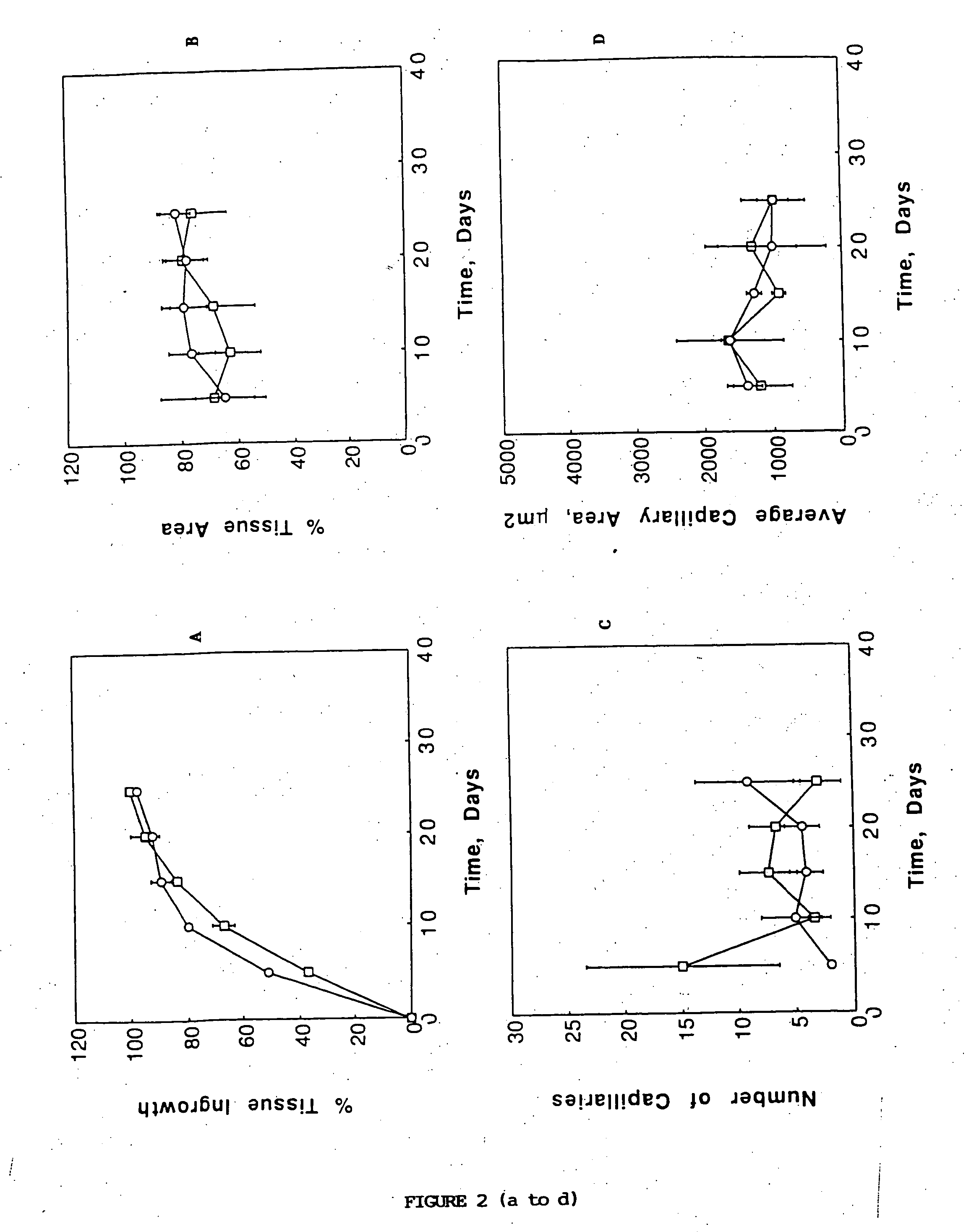Porous biodegradable polymeric materials for cell transplantation
a biodegradable polymer and cell technology, applied in the field of polymeric materials, can solve the problems of loss of organ function, injury or disease, congenital defects, etc., and achieve the effect of enhancing cell attachmen
- Summary
- Abstract
- Description
- Claims
- Application Information
AI Technical Summary
Benefits of technology
Problems solved by technology
Method used
Image
Examples
example 1
Preparation of Devices
Materials and Methods
Materials
[0036] The homopolymer, poly(L-lactic acid) (PLLA), and the copolymers, poly(DL-lactic-co-glyColic) (PLGA) (85:15) and PLGA (50:50), were supplied by Medisorb (Cincinnati, Ohio). (The ratios 85:15 and 50:50 stand for the copolymer ratio of lactic acid to glycolic acid). The polymer molecular weights were measured by gel permeation chromatography as Mn=104,800 (Mw / Mn=11.13) for PLLA, as Mn=121,100 (Mw / Mn=1.16) for PLGA (85:15), and as Mn=82,800 (Mw / Mn=1.14) for PLGA (50:50) (where Mn is the number average molecular weight and Mw is the weight average molecular weight). Granular sodium chloride (Mallinckrodt, Paris, Ky.) was ground with an analytical mill (model A-10 Tekmar, Cincinnati, Ohio). The ground particles were sieved with ASTM sieves placed on a sieve shaker (model 18480, CSC Scientific, Fairfax, Va.). Chloroform was furnished by Mallinckrodt.
[0037] Seven groups of transplantation devices were prepared by a two-step pr...
example 2
Implantation and Harvest of Devices
Implantation into Rats
[0041] Devices were implanted in the mesentery of male 15 syngeneic Fischer 344 rats (Charles River, Wilmington, Mass.). In a typical experiment, the rat was anesthetized using methoxyflurane (Pitman Moore, Mundelein, Ill.) and its abdominal wall was incised. The mesentery, which is a thin fatty layer of tissue supplying blood to the small bowel, was displayed on sterile gauze carefully to avoid traumatizing the blood vessels or the tissue. The sterile device was placed onto the unfolded mesentery. Then, the mesentery was folded back over the device so as to envelope it, and put back into the rat. The device was sutured on the mesentery using non-absorbable surgical suture (Prolene, Ethicon, Sommerville, N.J.). The laparectomy was closed separately for the muscle layer and the skin with a synthetic absorbable suture (Polyglactin 910, Ethicon). Two devices were implanted in each 200 g rat, one proximally and one distally. Fo...
PUM
| Property | Measurement | Unit |
|---|---|---|
| Pore size | aaaaa | aaaaa |
| Pore size | aaaaa | aaaaa |
| Pore size | aaaaa | aaaaa |
Abstract
Description
Claims
Application Information
 Login to View More
Login to View More - R&D
- Intellectual Property
- Life Sciences
- Materials
- Tech Scout
- Unparalleled Data Quality
- Higher Quality Content
- 60% Fewer Hallucinations
Browse by: Latest US Patents, China's latest patents, Technical Efficacy Thesaurus, Application Domain, Technology Topic, Popular Technical Reports.
© 2025 PatSnap. All rights reserved.Legal|Privacy policy|Modern Slavery Act Transparency Statement|Sitemap|About US| Contact US: help@patsnap.com



